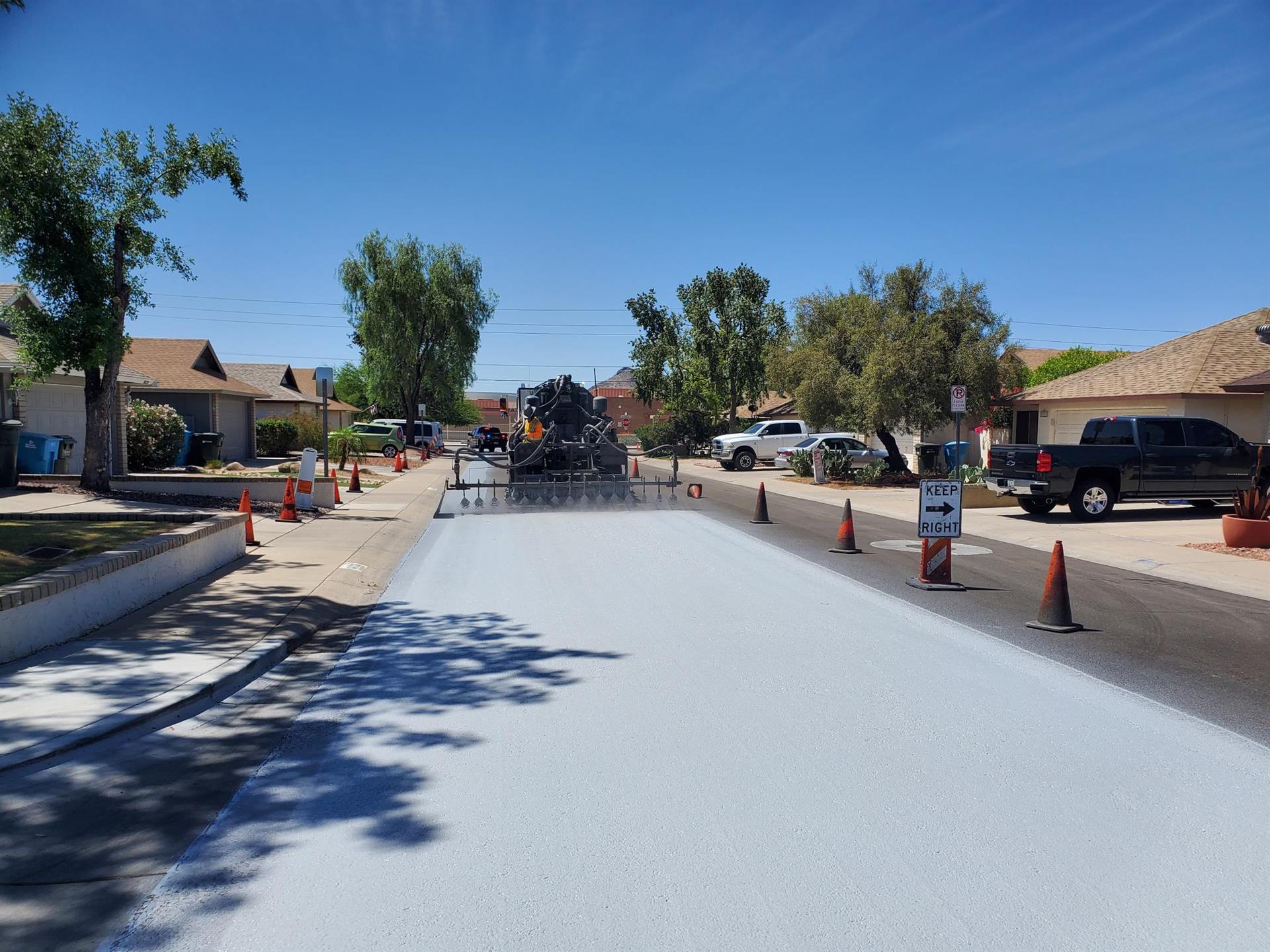María León.- .- The American city of Phoenix, in Arizona, combats climate change by covering the streets with a “cold pavement” or “gray asphalt”, as part of a municipal strategy against high temperatures and deaths from heat which also includes increasing the trees.
For about two years and to date, in this city of a little more than 1.6 million inhabitants, a total of 73 miles (117 km) of roads have been covered with this pavement that absorbs less heat and is made of asphalt. , water, emulsifier and other elements.
“The first results we have had are very promising since it offers a reduction of 10 to 12 degrees in road surface temperatures,” Phoenix Mayor Kate Gallego tells Efe.
The Democrat stated that cold pavement is an essential part, but not the only part, of efforts to combat global warming and its impact on communities.
Gallego pointed out that, in addition to the cold pavement, more trees and other types of native desert vegetation that do not require as much water to survive are being planted.
“This is one way Phoenix is taking steps to be the most sustainable desert city in the world,” Gallego said.
Be a bricklayer in Phoenix
In Phoenix, construction workers like Alejandro Ruiz especially suffer from the heat.
“In the summer we must start working as early as possible, however by 8 in the morning we are already at 90 (degrees Fahrenheit, 32.2 Celsius) so we must be very careful so as not to get a ‘shock’ of heat’”, he tells Efe.
The worker, of Mexican origin, says that some days the pavement is so hot that if he stands for a long time in one place he feels that the soles of his sneakers begin to “melt.”
“Arizona is one of the states that is at the forefront of the changes we are experiencing due to global warming, each year we are recording more and more days with temperatures exceeding 100 degrees Fahrenheit (about 38 Celsius),” Erick Meza, underlines to Efe. border coordinator of the environmental group Sierra Club in Arizona.
Climate change is having a harsh impact in Arizona’s capital city, where 50 days were recorded in 2020 with temperatures above 110 degrees Fahrenheit (43 Celsius).
On average, about 300 people die each year due to the high temperatures that prevail in the fifth largest city with a metropolitan area in the United States.
More gray pavement and more trees
The light gray cold pavement is a thin layer that is sprayed over existing asphalt on city streets and some parking lots as part of a project conducted in conjunction with Arizona State University (ASU).
The idea is to combat the so-called “urban heat island effect,” a hot bubble caused by daily human activities that occurs in several American cities.
Data from the US Environmental Protection Agency (EPA) shows that nighttime temperatures in “heat island” areas can be up to 22 degrees higher.
Cold pavement allows the sun’s rays to reflect and this causes it to absorb less heat than common black asphalt, which accumulates and retains heat during the day, slowly releasing it, which helps keep the temperature high. even during the night.
Meza pointed out that this is a first step to combat climate change, which is having a serious “domino effect”, as it increases the consumption of water and also electricity.
But, he warned, “a single technique is not going to be the solution.”
He regretted that low-income and most vulnerable communities face a greater risk, because the “heat island” effect is stronger in places where there is a lack of parks and other types of “cooling” structures and green areas.
In southern Arizona, the city of Tucson also seeks to plant “one million native trees” to reforest urban areas.
Several cities in Arizona are also implementing programs for homeowners to harvest rainwater.
Safe for cyclists and pets
Cold pavement is made with asphalt, water, an emulsifying agent (soap), mineral fillers, polymers and recycled materials. It is free of harmful chemicals and is compatible with traditional asphalt, according to the local government.
It is safe for people, pets, vehicles and all typical activities that would be carried out on a road because, despite being lighter in color, it does not produce glare and also “meets or exceeds” anti-slip safety requirements.
The local government found no safety or friction problems for people walking, driving or bicycling on streets covered with fresh pavement after a pre-program test, done under various conditions, including humidity.

